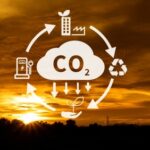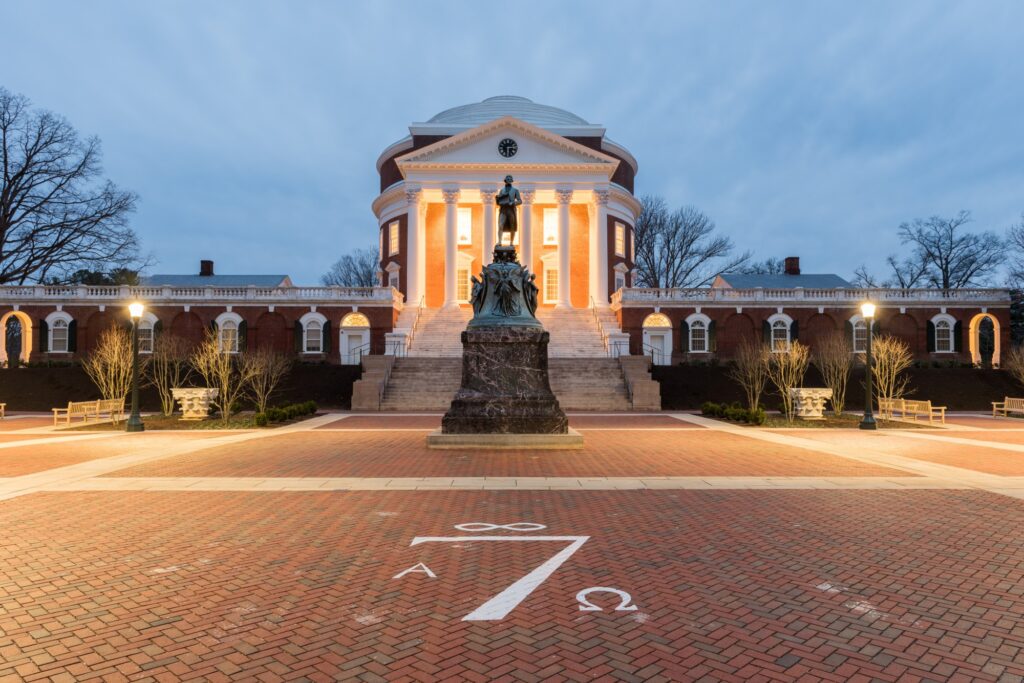Congratulations to 2023 Better Buildings Challenge Goal Achievers Allegheny College, Community College of Allegheny County, Morehouse College, and University of Virginia on achieving their portfolio-wide energy savings goals. These four partners manage a combined portfolio of more than 19 million square feet and serve over 42,000 students. Learn more about the measures that these institutions took to achieve their goals below.
ALLEGHENY COLLEGE
Allegheny College achieved 22% energy savings across its portfolio of 1.3 million square feet, including more than 30 buildings. This higher education institution invested in lighting retrofits, building envelope improvements, HVAC and boiler upgrades, and sustainable renovations and construction featuring geothermal heating and cooling. Allegheny College also made impactful strides in developing a culture of sustainability through an annual energy challenge that promotes responsible occupant behavior across the campus community.
COMMUNITY COLLEGE OF ALLEGHENY COUNTY
Community College of Allegheny County (CCAC) achieved 22% energy savings across its portfolio of 18 buildings spanning 1.5 million square feet. CCAC achieved major energy savings by implementing an HVAC plant replacement as well as extensive lighting, HVAC, and controls upgrades across all college facilities. To further enable behavior change, CCAC provided plant personnel trainings on Building Operator Certification. The college also implemented a computer management system which resulted in a substantial decrease in energy used by PCs across campus in addition to virtualizing servers and switching to laptops.
MOREHOUSE COLLEGE
Morehouse College achieved 31% energy savings across its portfolio of 1.6 million square feet, including more than 30 buildings. These energy savings were achieved through a campus-wide LED lighting upgrade, HVAC controls upgrades in 11 buildings, installation of low-flow water fixtures in select buildings, the implementation of an energy management program that analyzes utility usage resulting in the development of an energy policy, engagement programs, and curtailed building HVAC usage. Morehouse conducts periodic energy audits and has undertaken building retro-commissioning to further increase efficiency. One of the key successes of the college has been engagement with project design teams to ensure procurement of energy-efficient equipment as well as strategic building control logic and sequences of operation.
UNIVERSITY OF VIRGINIA
University of Virginia (UVA) achieved a 27% reduction in energy use intensity (EUI) across its portfolio of over 15,300,000 square feet, including more than 550 buildings. UVA’s Building Efficiency Program utilizes a revolving fund to upgrade building controls and retrofit lighting to improve energy efficiency with no upfront cost to the building owner. Specific to research spaces, UVA’s Smart Labs program bridges safety and energy efficiency while identifying and implementing infrastructure improvements. Another key building efficiency initiative is the university’s Green Building Standards, which include process-oriented requirements (energy modeling, life cycle costing, goal-setting) and prescriptive requirements (energy targets, fossil fuel-free requirements) for all projects as applicable to scope. UVA also has robust outreach and engagement programs for staff, faculty, and students to encourage energy conservation.
Congratulations to all 2023 Goal Achievers! Explore more higher education solutions and get involved in the Better Buildings Challenge.
This column originally appeared as a blog on the Better Buildings website.
 Through DOE’s Better Buildings Initiative, more than 900 commercial, public, industrial, and residential organizations share their proven energy efficiency strategies and inspire others to tap into the continued potential for energy efficiency. Collectively these organizations have saved 2.5 quadrillion Btus of energy, equivalent to $15.3 billion, and 155 million metric tons of carbon dioxide. Partners have reduced their water use by 13.7 billion gallons. Together, partners represent more than 35 of the country’s Fortune 100 companies, 10 of the top 25 U.S. employers, 14% of the U.S. manufacturing energy footprint, and 13% of total commercial building space, as well as more than 100 state and local governments spanning the nation.
Through DOE’s Better Buildings Initiative, more than 900 commercial, public, industrial, and residential organizations share their proven energy efficiency strategies and inspire others to tap into the continued potential for energy efficiency. Collectively these organizations have saved 2.5 quadrillion Btus of energy, equivalent to $15.3 billion, and 155 million metric tons of carbon dioxide. Partners have reduced their water use by 13.7 billion gallons. Together, partners represent more than 35 of the country’s Fortune 100 companies, 10 of the top 25 U.S. employers, 14% of the U.S. manufacturing energy footprint, and 13% of total commercial building space, as well as more than 100 state and local governments spanning the nation.





